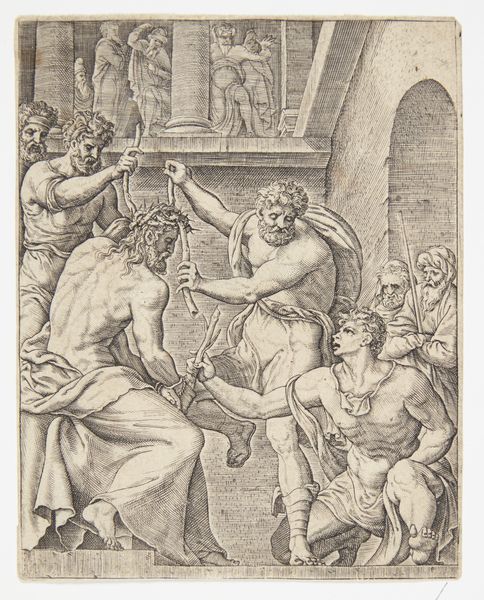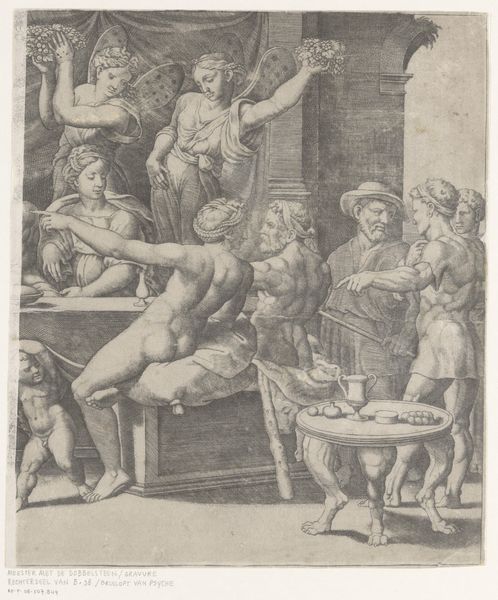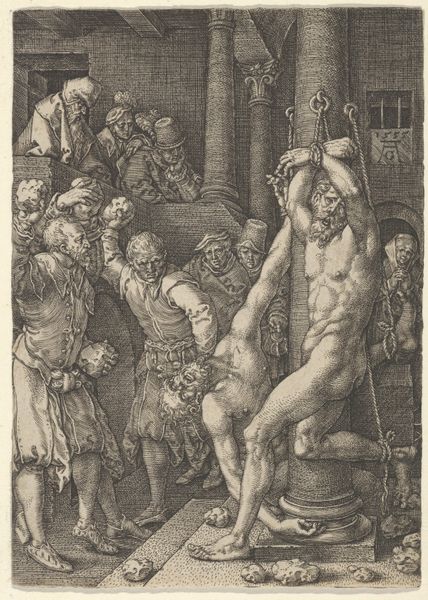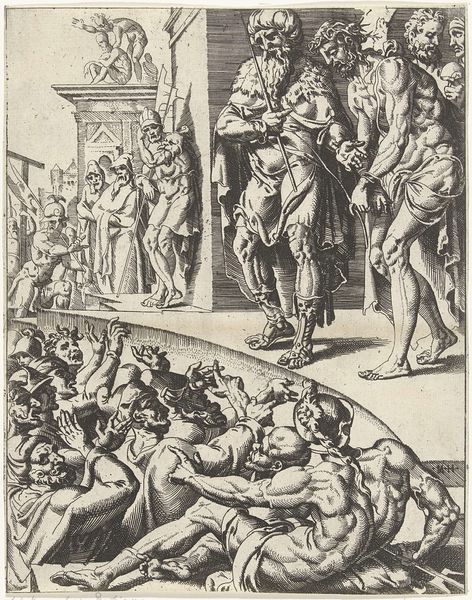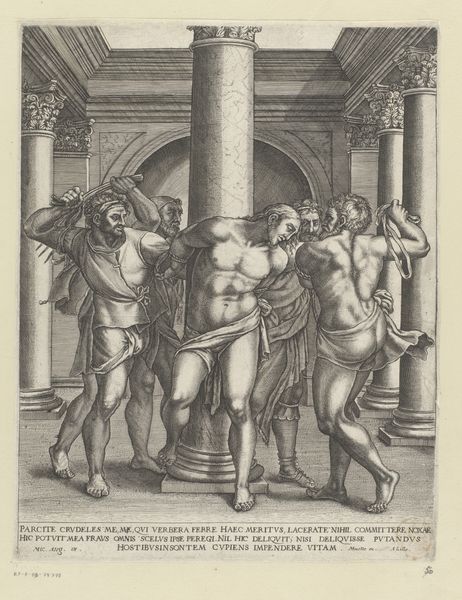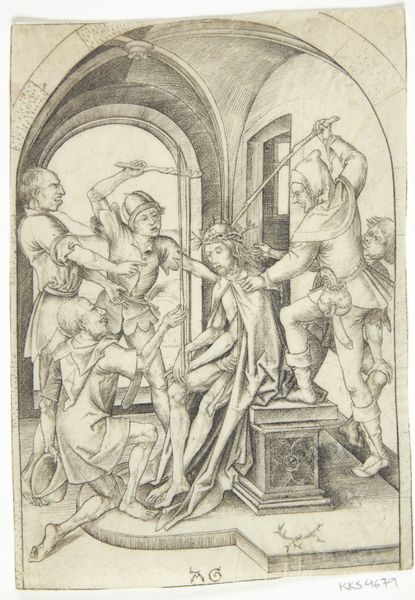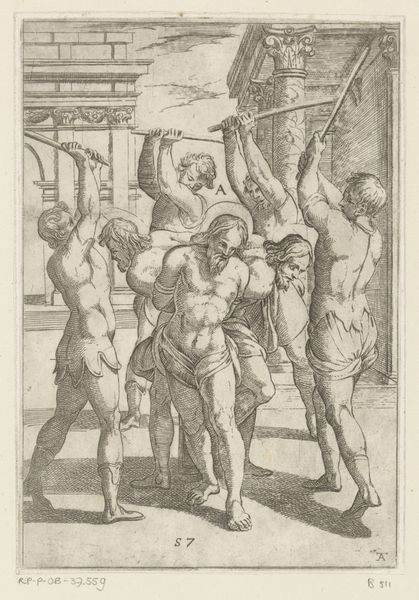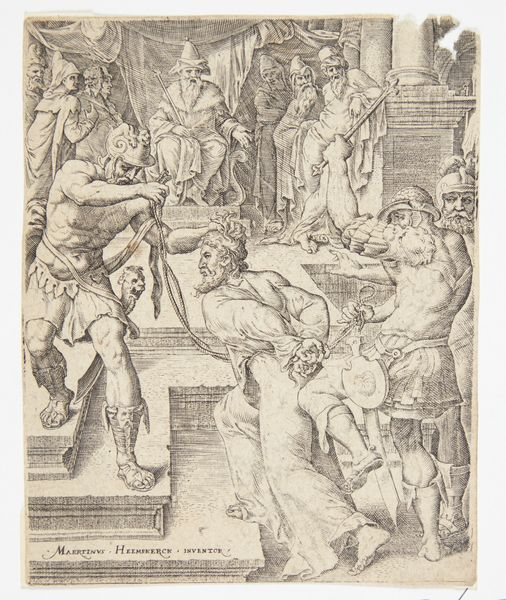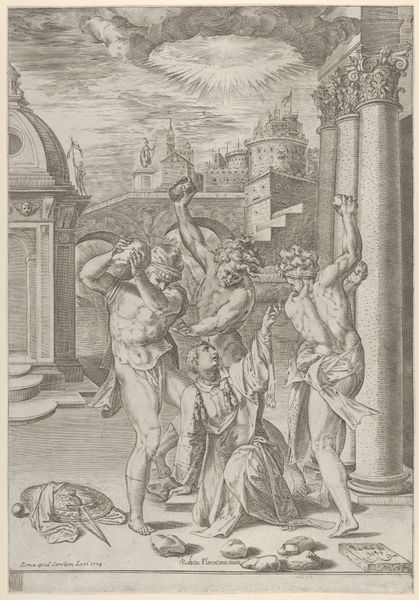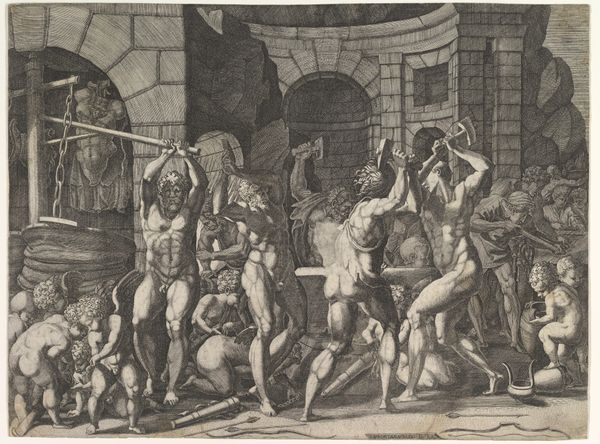
print, engraving
#
narrative-art
# print
#
figuration
#
11_renaissance
#
history-painting
#
engraving
Dimensions: 115 mm (height) x 91 mm (width) (bladmaal)
Curator: This is an engraving entitled “Hudflettelsen,” dating back to 1568. While its creator remains anonymous, its themes touch on powerful aspects of narrative art and historical painting. What is your first impression? Editor: Raw. Visceral, almost. The stark black and white intensifies the figures’ agony. I immediately sense a strong story, even without knowing the historical context. And, boy, do I wince when I look at that central figure. He seems frozen and utterly hopeless! Curator: That visceral response is understandable. We see figures enacting physical violence, all being overseen by some central authoritative man on the right, with additional viewers looking from under and behind. As print, “Hudflettelsen” likely had a specific social function. It would be circulated and discussed amongst contemporaries, allowing the politics of the time and moral narratives of justice, injustice, cruelty, and spectacle, to circulate alongside. Editor: The level of detail for an engraving is astounding. Just look at the muscular tension in the figures' bodies. How do you read the positioning of these bodies relative to power? Is this violence sanctioned from above, and enacted onto the body, literally and figuratively? Curator: Precisely. The composition highlights the power dynamics inherent in public shaming. Consider, too, the cultural significance of bodies—male bodies in this instance—and how public punishment intersects with gender, power, and the control over both image and individual. This form of justice historically normalizes these scenes for future consumption through documentation of this exact nature. Editor: There’s a distance created for me by that. Seeing this act memorialized in print. I’m thinking about who could have witnessed this kind of ritual? And also, thinking, do I believe justice is being carried out here? It could all easily serve some sinister political agenda. Curator: Exactly. The image's function exceeds a historical document; its artistry asks us to contend with complex issues around human dignity, ethical governance, and, importantly, historical narratives' influence on social perspectives, both then and now. It raises questions, not solutions, inviting us to consider who controls historical narratives and for what purposes. Editor: I came here expecting one reaction, a sense of shock and unease; but instead, I’m now turning the issue around in my head and finding so much more here to take away. What starts as a disturbing image transforms into a space for ethical reckoning with society itself! Curator: Indeed! It showcases how art acts as a complex cultural artifact, constantly urging us to dissect and contextualize how we got here from there!
Comments
No comments
Be the first to comment and join the conversation on the ultimate creative platform.
